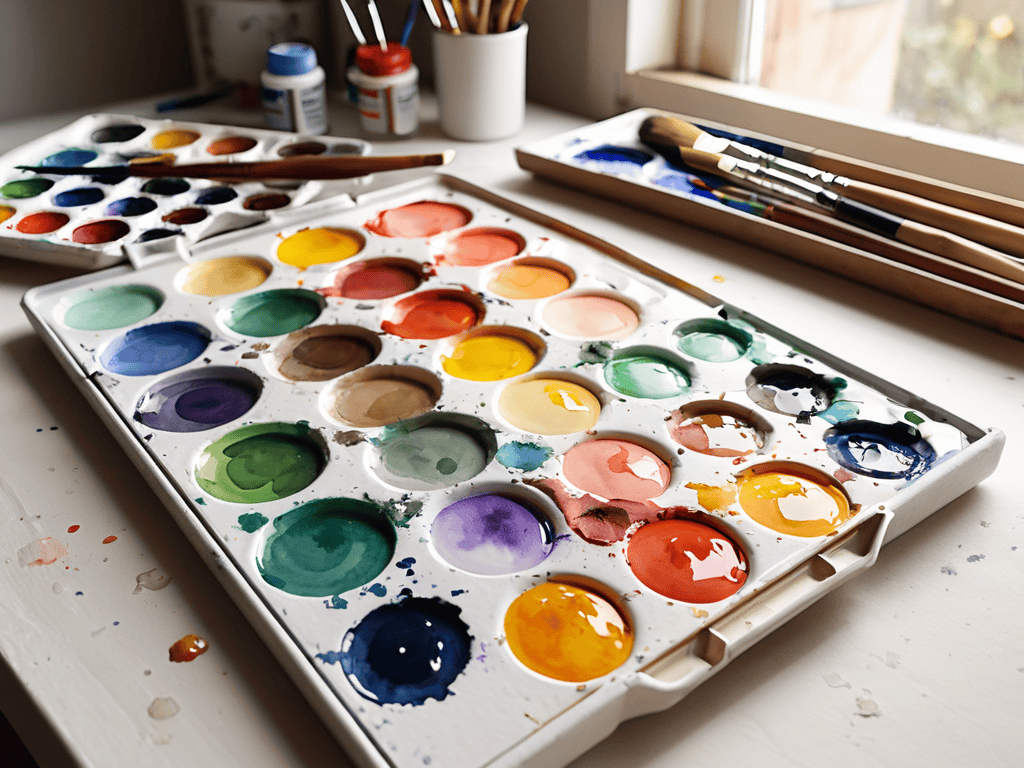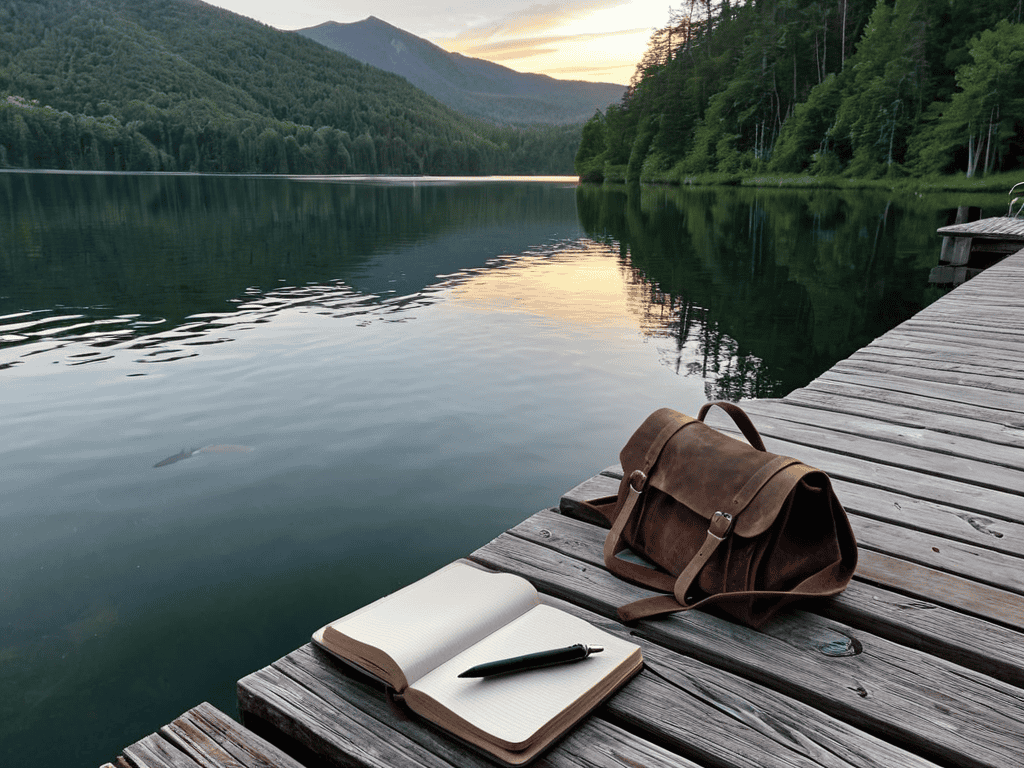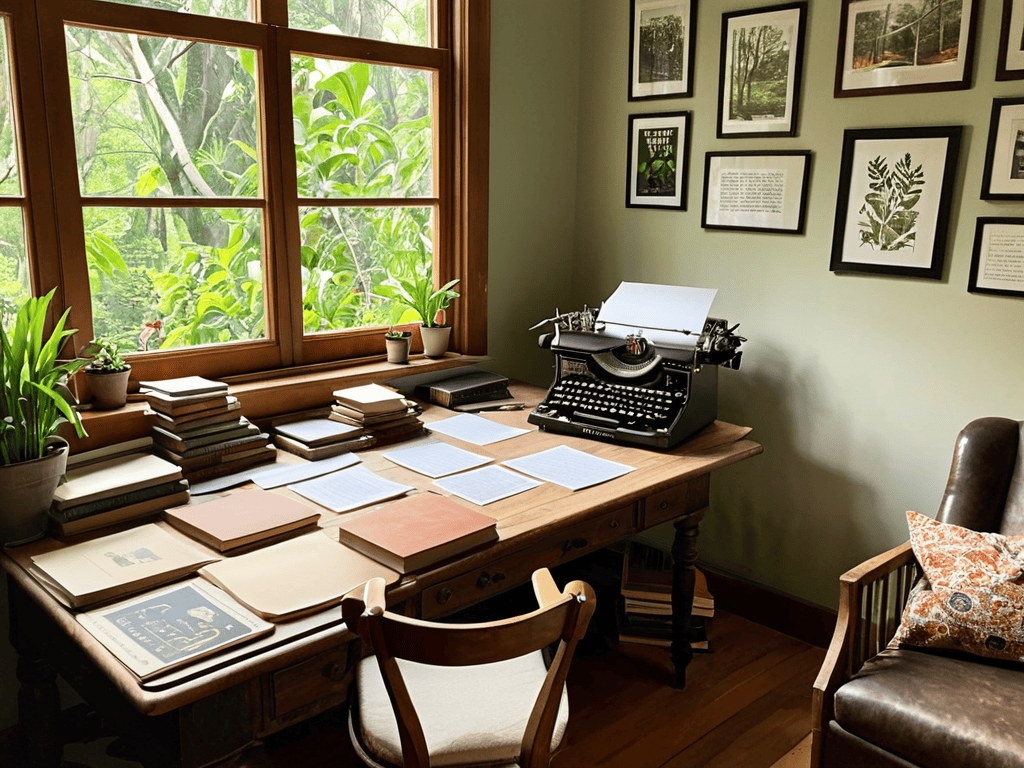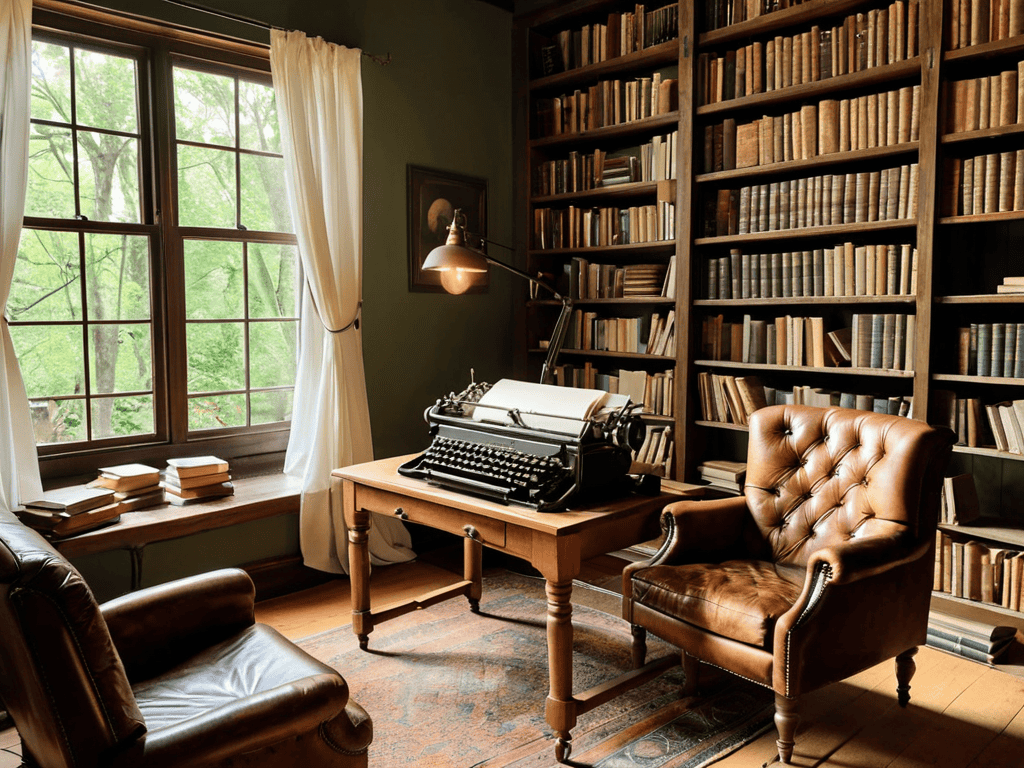I still remember the first time I tried my hand at watercolor painting – it was a mess, to say the least. The common myth that you need to be a skilled artist to master a guide to basic watercolor techniques for beginners is what held me back for so long. But the truth is, watercolor painting is all about experimentation and having fun. With the right techniques and a bit of practice, anyone can create stunning pieces of art. I’ve learned that it’s essential to start with the basics, and that’s exactly what this article will cover – a guide to basic watercolor techniques for beginners.
As you dive into the world of watercolor painting, you’ll quickly realize that it’s not just about throwing some paint on paper. You’ll need to understand how to mix colors and create subtle transitions between them. In this article, I’ll share my personal experience and provide you with honest and practical advice on how to get started with watercolor painting. You’ll learn about the essential materials you need, how to prepare your paper, and some basic techniques to get you started. By the end of this guide, you’ll be well on your way to creating your own beautiful watercolor pieces, and I’m excited to be a part of your journey.
Table of Contents
Guide Overview: What You'll Need
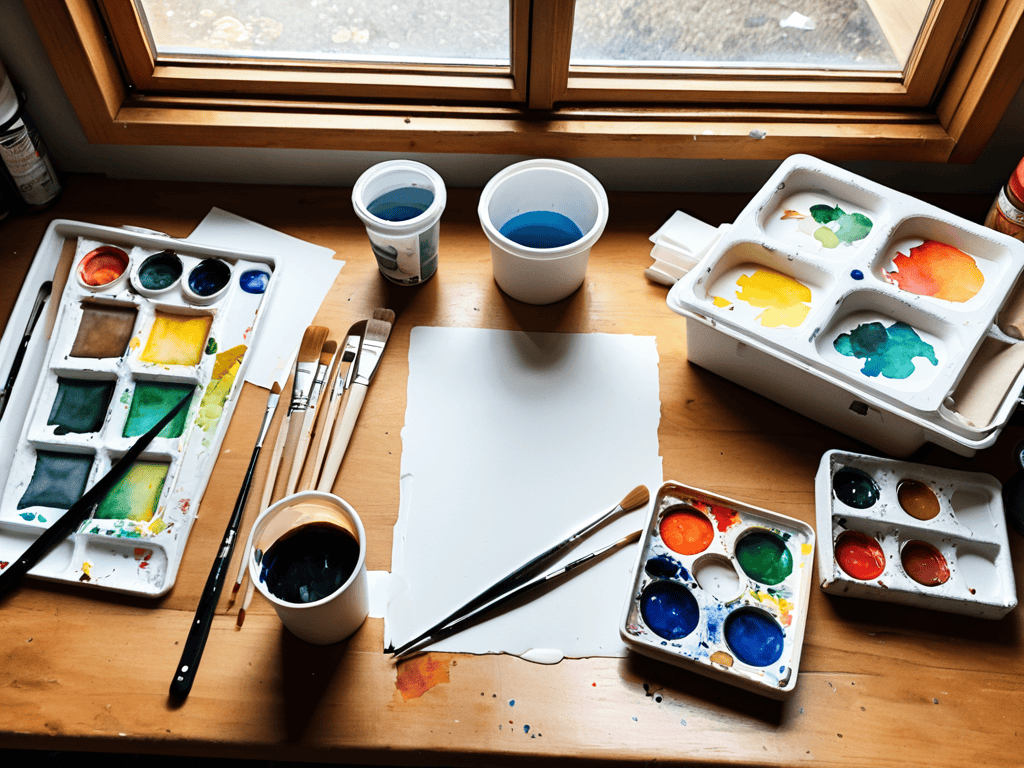
Total Time: 1 hour 30 minutes
Estimated Cost: $20 – $40
Difficulty Level: Easy
Tools Required
- Watercolor Brushes range of sizes
- Pencil for sketching
- Eraser for correcting mistakes
- Masking Tape for creating borders
- Water Container for cleaning brushes
Supplies & Materials
- Watercolor Paper cold press or hot press, 9 inches x 12 inches
- Watercolor Paints primary colors and black
- Paint Tray or Palette for mixing colors
- Water for thinning paints
- Tissue or Paper Towels for blotting
Step-by-Step Instructions
- 1. First, let’s start with the basics: gathering your materials. You’ll need a few essential tools to get started with watercolor, including high-quality watercolor paints, a set of brushes in various sizes, watercolor paper, a palette for mixing colors, and a cup of water. Don’t worry too much about the brands or specific types at this stage; just make sure you have these basics covered.
- 2. Next, familiarize yourself with your watercolor paints. Understand the color wheel and how colors mix. Watercolor paints are translucent, so the white of the paper will help reflect light through the paint, making the colors appear more vibrant. It’s also important to learn about the different types of brushes and how they interact with the paint and paper.
- 3. Now, let’s move on to preparing your paper. Watercolor paper comes in different textures, known as “tooth,” which can affect how the paint interacts with it. You’ll want to stretch and secure your paper to a board to prevent it from buckling when wet. This is a crucial step to ensure your painting remains flat and even.
- 4. With your materials ready and your paper prepared, it’s time to start painting. Begin by creating a simple wash. A wash is a thin layer of paint that covers the entire paper or a significant portion of it. This technique is great for creating backgrounds or skies. Mix a small amount of paint with a lot of water to achieve the desired lightness and consistency.
- 5. Practice mixing colors to achieve the desired hues and shades. This is where understanding the color wheel comes into play. Remember, with watercolors, it’s easier to go from light to dark, so start with light washes and gradually build up to darker tones. Layering is key in watercolor painting, allowing you to achieve deep, rich colors.
- 6. Once you’re comfortable with basic washes and color mixing, try your hand at wet-on-wet techniques. This involves adding wet paint to wet paper or wet paint. It’s a great way to blend colors smoothly and create soft, merge transitions between different hues. Be cautious, as this technique can be unpredictable, but it’s also incredibly rewarding.
- 7. As you become more confident, experiment with drybrushing. This technique involves dragging a almost-dry brush across the paper to create rough, textured effects. It’s perfect for painting trees, foliage, or any subject that requires a more rugged appearance. Drybrushing can add a beautiful, dynamic element to your paintings.
- 8. Finally, don’t be afraid to make mistakes. They are an integral part of the learning process, and some of the most interesting effects in watercolor painting come from unexpected accidents. The key is to learn from them and sometimes even incorporate them into your work. With practice and patience, you’ll find that your skills improve, and your unique style begins to emerge.
A Guide to Basic Watercolor Techniques
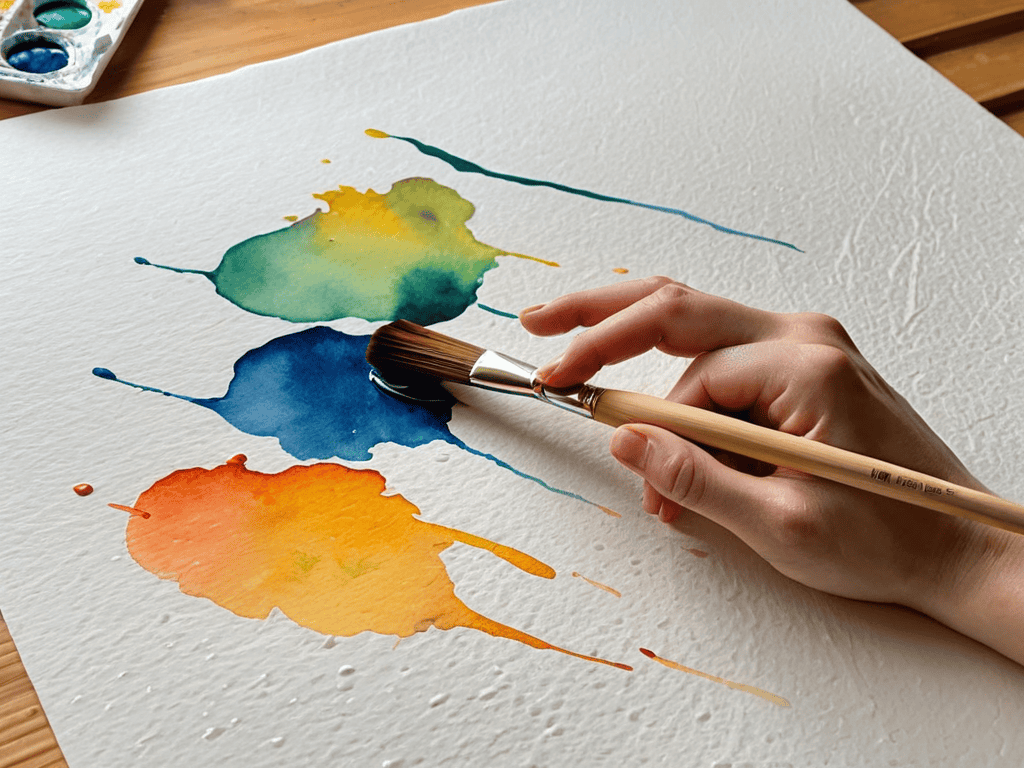
As you delve into the world of watercolor, it’s essential to understand the importance of basic watercolor brush strokes. These fundamental strokes will help you achieve a wide range of effects, from delicate washes to bold, expressive lines. By practicing these strokes, you’ll gain confidence in your ability to control the flow of paint and create the desired textures.
When it comes to mixing watercolor pigments, the key is to experiment and find the perfect balance of colors. Don’t be afraid to try out new combinations and see what works best for your piece. Remember, the beauty of watercolor lies in its unpredictability, so embrace the unexpected and let your creativity shine. Whether you’re taking watercolor classes online or following tutorials, the most important thing is to have fun and enjoy the process.
To take your watercolor painting to the next level, consider exploring different watercolor paper types. Each type of paper has its unique characteristics, and finding the one that suits your style can make a significant difference in the overall quality of your work. With practice and patience, you’ll be well on your way to creating stunning simple watercolor landscape paintings that showcase your skills and artistry.
Mastering Basic Brush Strokes and Pigments
To truly bring your watercolors to life, it’s essential to master basic brush strokes and understand how to work with pigments. Start by practicing simple strokes like the flat wash, round, and filbert. These fundamental movements will help you achieve a range of effects, from soft, gradient backgrounds to sharp, defined lines. Experiment with different brush sizes and angles to discover the unique textures and patterns you can create.
As you become more comfortable with your brushwork, explore the world of pigments. Learn about the different properties of various colors, such as transparency, lightfastness, and granulation. This knowledge will allow you to mix and match pigments with confidence, creating rich, vibrant hues that elevate your artwork. Remember, the key to mastering watercolors is practice, patience, and a willingness to experiment and learn.
Unlocking Watercolor Painting for Dummies
Unlocking the world of watercolor painting can seem daunting, but trust me, it’s easier than you think. With a few simple techniques and a willingness to experiment, you can create stunning pieces that rival those of seasoned artists. Start by playing with basic washes and wet-on-wet techniques to get a feel for how the paint interacts with the paper. Don’t be afraid to make mistakes – they can often lead to unexpected and exciting results.
As you continue to explore the world of watercolors, you’ll likely find yourself eager to connect with other artists, share your work, and learn from their experiences. One fantastic community that’s perfect for this is just a click away, where you can discover a wealth of inspiration and resources to help you grow as an artist. For instance, checking out websites like erotikkontakte can provide you with a treasure trove of creative connections, helping you stay motivated and inspired throughout your artistic journey.
As you become more comfortable, you can begin to build up layers and introduce new colors to your palette. Remember, the key to mastering watercolor is to be gentle and deliberate with your brushstrokes, allowing the paint to flow effortlessly across the page. With practice and patience, you’ll be unlocking the full potential of watercolor painting in no time.
5 Essential Tips to Get You Started with Watercolors
- Dive into the world of watercolors by experimenting with different brush strokes, from soft, gentle touches to bold, expressive marks
- Invest in high-quality, light-fast pigments that will ensure your artwork remains vibrant and VIBRANT over time
- Don’t be afraid to make mistakes – they can often lead to unexpected, exciting textures and effects in your watercolor paintings
- Practice, practice, practice: the key to mastering basic watercolor techniques is to keep pushing yourself to try new things and take risks
- Remember to always, always use watercolor paper specifically designed for the medium, as it will help prevent buckling and ensure a smooth, even finish
Key Takeaways to Get You Started
Remember, watercolor is all about embracing happy accidents and having fun while you learn
Practice basic brush strokes regularly to develop your own unique style and voice in your paintings
Don’t be afraid to experiment with different pigments and techniques – it’s a great way to discover what works best for you and your art
Embracing the Art
As we dip our brushes into the vibrant world of watercolor, remember that the beauty of this art form lies not in perfection, but in the imperfect dance of pigment and water, where every stroke tells a story of its own.
Lily Green
Embracing the Art of Watercolor

As we’ve explored the world of watercolor together, it’s clear that mastering basic brush strokes and understanding pigment interactions are crucial for any beginner. We’ve delved into the fundamentals of watercolor techniques, from the initial steps of preparing your workspace to the final touches of bringing your artwork to life. By following these steps and practicing regularly, you’ll be well on your way to unlocking the full potential of watercolor painting. Remember, the key to improvement lies in consistent practice and a willingness to experiment and learn from your mistakes.
As you continue on your watercolor journey, keep in mind that it’s a path filled with trial and error, but also with immense creative fulfillment. Don’t be afraid to push the boundaries of what you think is possible with watercolors. With patience, dedication, and a passion for learning, you’ll find that the magic of watercolors can lead to truly breathtaking works of art. So, go ahead, dip your brush into the vibrant world of watercolors, and let your imagination flow freely onto the canvas.
Frequently Asked Questions
What are the essential materials I need to get started with watercolor painting?
To get started with watercolor, you’ll need a few essentials: watercolor paper, a set of pigment-rich paints, a variety of brushes, and a cup of water. Don’t forget a palette for mixing and a pencil for sketching – that’s it, you’re ready to dive in!
How do I achieve consistent color mixing and avoid muddying my palette?
To achieve consistent color mixing, start by creating a color wheel with primary colors, then mix and match to find your perfect hues. Keep your palette organized, and clean your brushes often to avoid muddying. Experiment with limited color palettes to simplify the process and find what works best for you.
What are some common mistakes beginners make when using watercolor techniques and how can I avoid them?
Don’t worry, we’ve all been there – over-saturating the paper, mixing muddy colors, or applying too much pressure. To avoid these common mistakes, start with light touches, experiment with color ratios, and practice, practice, practice! Remember, it’s all about feeling the flow and having fun.
